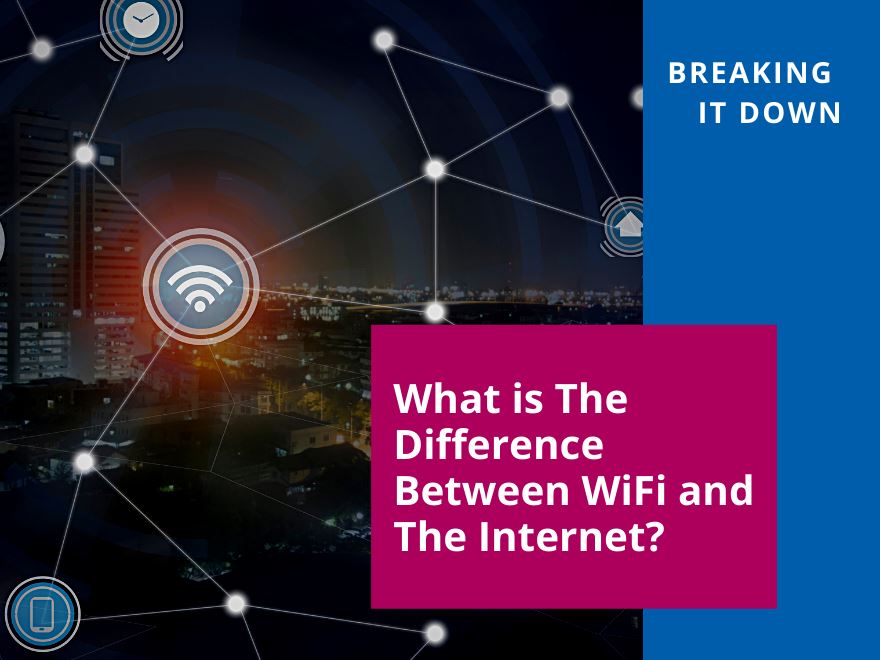A common misunderstanding that we see is in the customer support inbox that people use the terms WiFi and Internet interchangeably to mean access to the Internet. This comes up specifically as it relates to accessing various UpBlink features. Sometimes there is confusion surrounding the difference between setting up our controllers via our web-app and setting up CloudX to receive email updates or automatically upload images to the cloud. We’ll get more into that later. First, we need to define what WiFi and the Internet are.
Simply put: WiFi and the Internet are two completely different things.
WiFi is a communication medium between two (or more) devices completed wirelessly. The Internet, well, it’s the Internet, the world wide web! It’s just that we’re so used to connecting to the internet using WiFi so it's understandable many people confuse the two terms, thinking they’re one and the same.
To use an example: think of two major cities. Each has an enormous amount of great things that you may want to access. This is similar to the Internet. WiFi is a highway that connects the two cities, which allows you to get from Point A to Point B. WiFi provides access to each city.
Back in the day (which wasn’t all that long ago!), the only way to connect two or more devices was to run cables from one to another to create a network, known as a local area network (LAN). It was inconvenient and tethered you - and the devices - to one location with a cable. Enter WiFi. WiFi allows you to connect one device to another using the wireless networking protocol without the use of cables (like your home WiFi router connects with your phone or laptop). These devices can now share data, print and stream files stored on one of them. This is a wireless local area network (WLAN) —and this is completely separate from the Internet, just as your laptop is not ‘the Internet’.
On the other hand, the Internet is considered a wide area network (WAN). This is a vast network that links computers around the world. You then use your own wireless network to connect to this WAN, and in doing so, you’re part of the one enormous global network (aka the Internet).
So how does this apply to our products? You'll use a wireless connection (WLAN) when setting up the schedule and interval in UpBlink. Another WLAN example is, you’re able to frame the shot through the GoPro app or manually download footage between the camera and your phone. In both examples, no internet connection is required or used. Our controller or the GoPro camera each broadcasts its own temporary WiFi network, so no local WiFi is required for setup.
If you desire the use of CloudX Lite (to receive email monitoring updates) or CloudX Pro (automatically upload your images to the cloud, and more), a WiFi network with Internet access (WAN) can be used. In this instance, the WiFi capabilities of our controller connect to your WiFi network and via the Internet connect to CloudX.
We also support a hard-wired ethernet connection (via an Ethernet-usb converter) and USB 4G modems that connect directly to the internet without any need for WiFi.
Here’s a quick recap which connection is required for each feature:
Local WiFi Connection (UpBlink/BlinkX only):
- Setting and updating time lapse schedules
- Manual image download
- Framing the shot through GoPro app
Internet Required (BlinkX/UpBlink with CloudX Lite/CloudX Pro):
- Receive email status notifications (BlinkX)
- Automatic image upload to the cloud (UpBlink)



